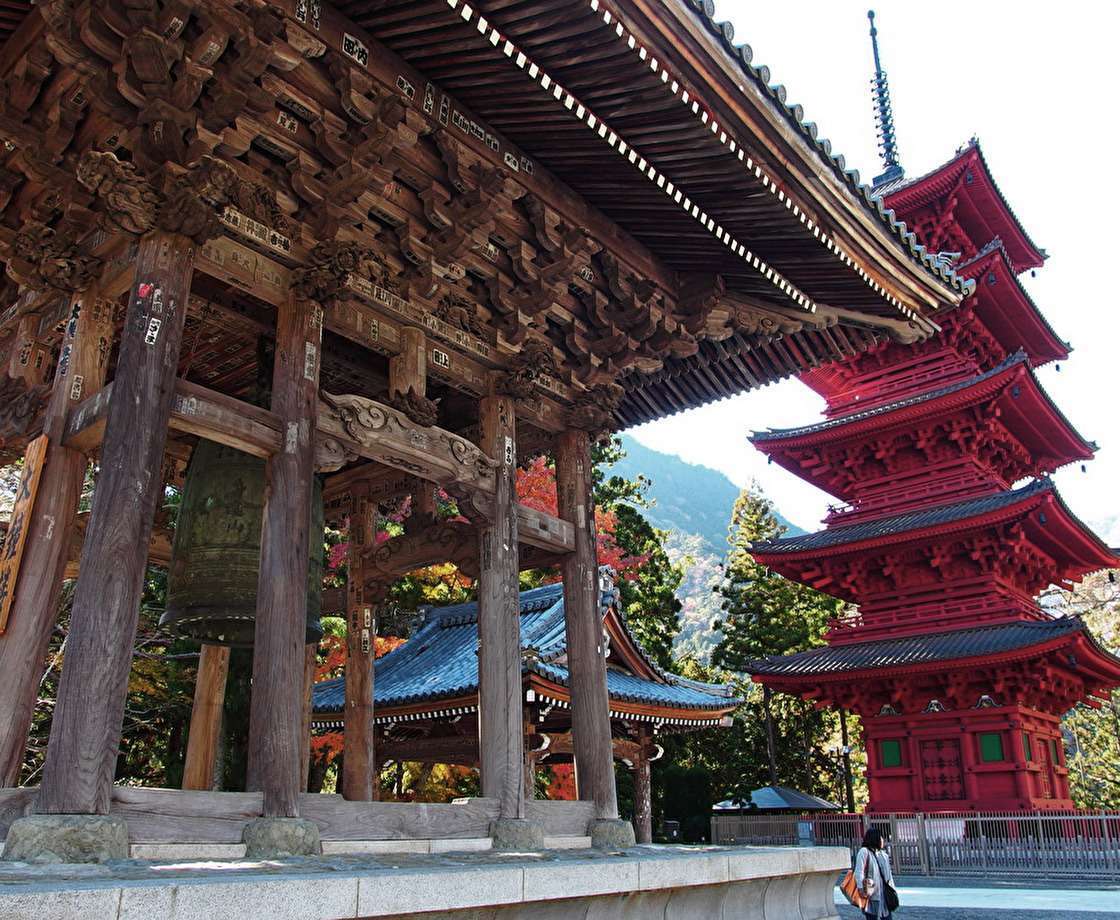A Guide to Minobusan Kuonji Temple: 2-Day Spiritual Journey
Have you ever heard of the three most sacred mountains in Japanese Buddhism? If not, allow me to introduce them to you. They are Mt. Koya in Wakayama Prefecture, Mt. Hiei in Shiga Prefecture, and Mt. Minobu, in Yamanashi Prefecture, not far from Tokyo. These mountains are regarded as important sites of faith in Japanese Buddhism.
Mt. Minobu is a revered place where the head temple of the Nichiren sect is situated. Located near Tokyo, it is a town surrounded by mountains, and offers a spiritual ambiance where one can profoundly comprehend and experience the essence of Japanese Buddhist culture.
If you're in search of a unique spiritual experience in Japan, allow me to introduce you to Mt. Minobu's Kuonji Temple and its enchanting surroundings, which I had the pleasure of visiting over two days. This journey touched my heart and provided me with some profound insights into Japanese culture and spirituality.
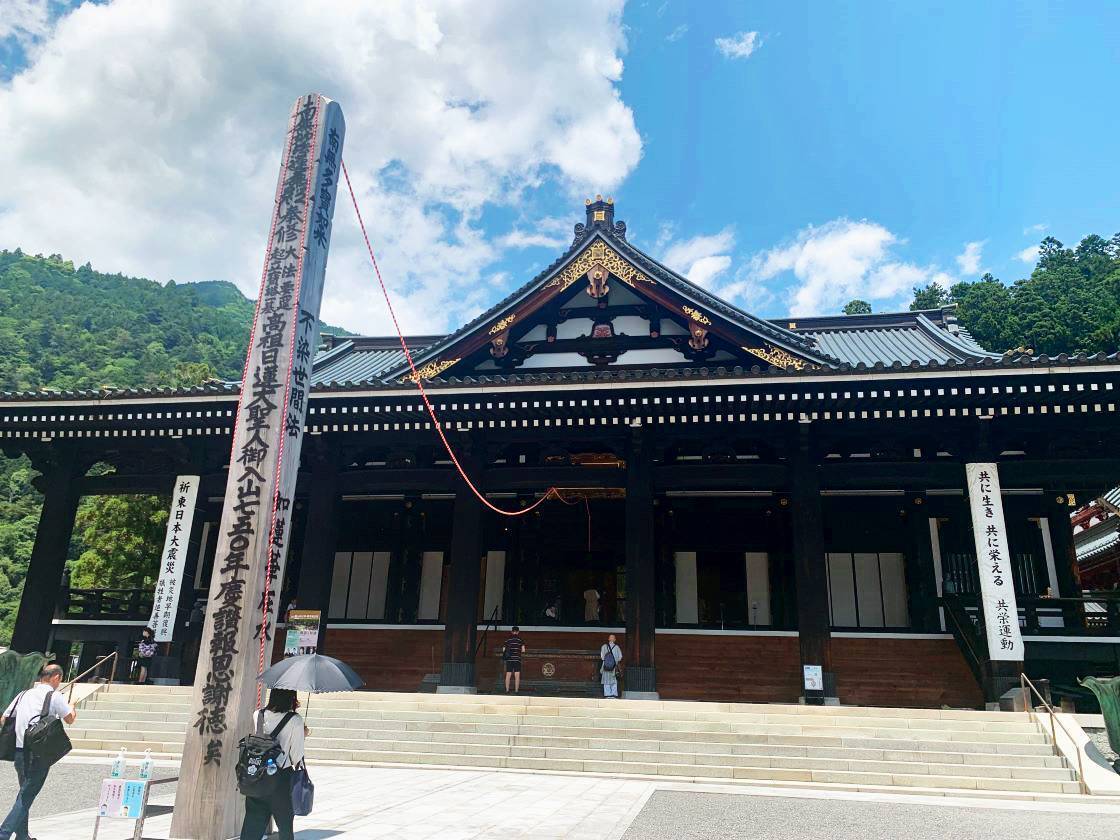
On my first day, I boarded a highway express bus from Shinjuku Bus Terminal at 9:45 in the morning. The journey took approximately 3 hours and 30 minutes. If the weather is favorable, you'll be treated to stunning natural landscapes and views of Mt. Fuji along the way.
For more details: https://highway-buses.jp/course/minobu.php
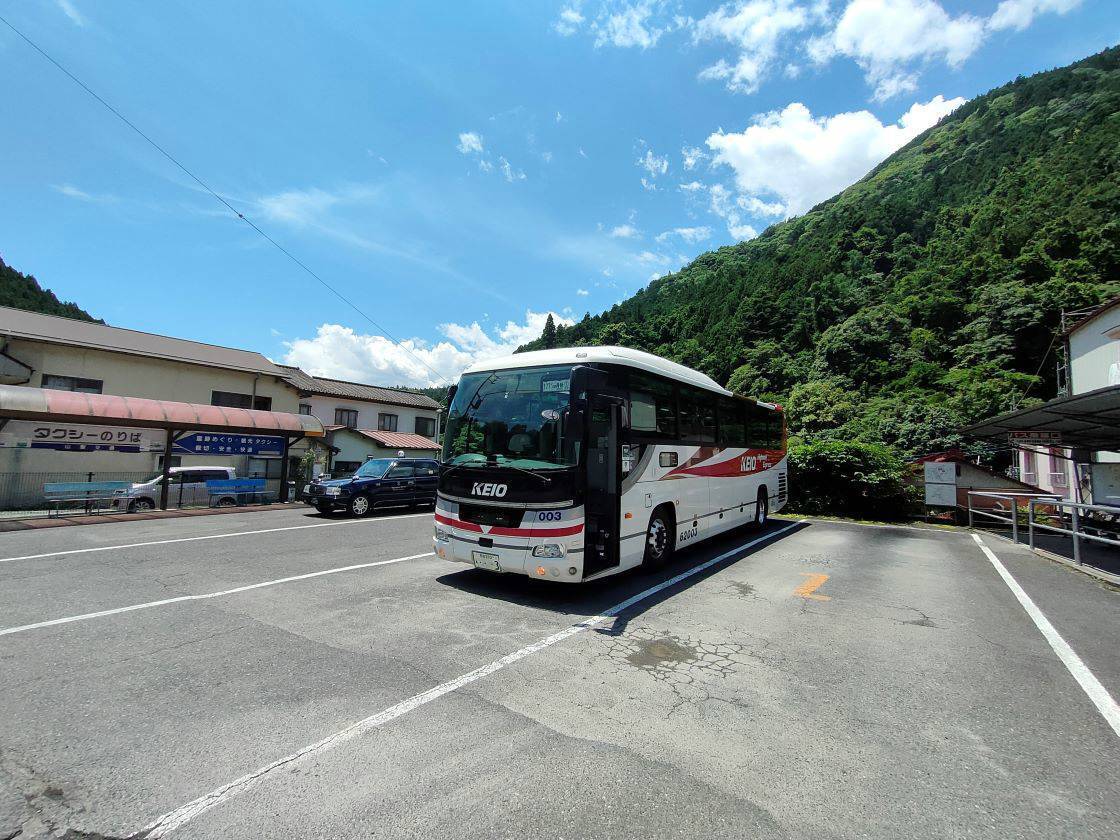
When I arrived at the Mt. Minobu bus terminal at 13:15, it was more or less time for some lunch. Directly in front of the bus stop I discovered a charming local cafe named Onrin. It seems that curry is quite popular here, while the coffee and light meals are also recommended.
After lunch, my adventure to explore Kuonji Temple began, but there was still some time before I needed to check in at my lodgings. That's when I discovered the convenient free lockers at the Mt. Minobu Tourist Information Center, located in front of the Sanmon Gate to Kuonji Temple. It operates on a system where you insert 100 yen to store your luggage, but you receive the 100 yen back when you retrieve your items. This allowed me to enjoy Mt. Minobu more freely without having to carry anything!
Free lockers at the tourist information center:
http://blog.isagoya.minobu.jp/2022/04/post-0266.html
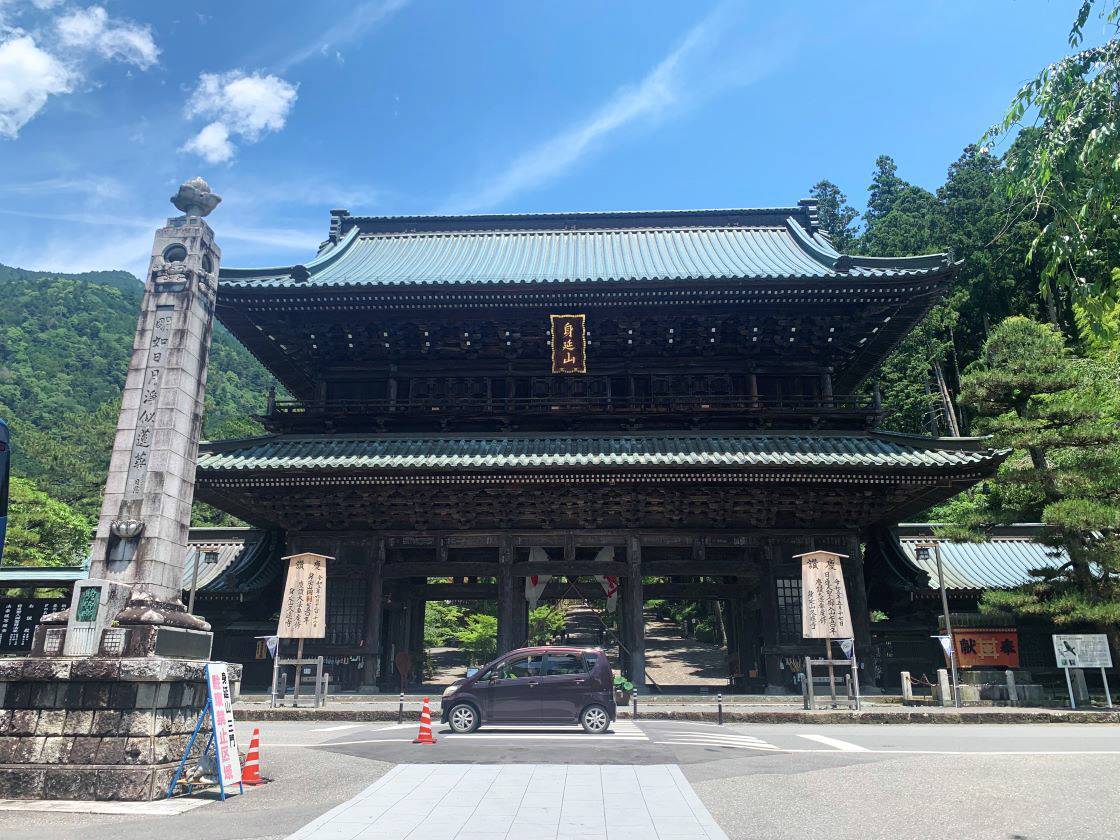
Passing through the Sanmon Gate, it felt as if I had entered another world and I was surrounded by the vast expanses of nature. There are two ways to get to the summit of Mt. Minobu. One is by cable car, while the other is a challenging path that lets you experience nature up close by climbing the stone steps all the way to the top. There are a total of 287 steps, which gives you plenty of time to enjoy the tranquil scenery all around as you climb.
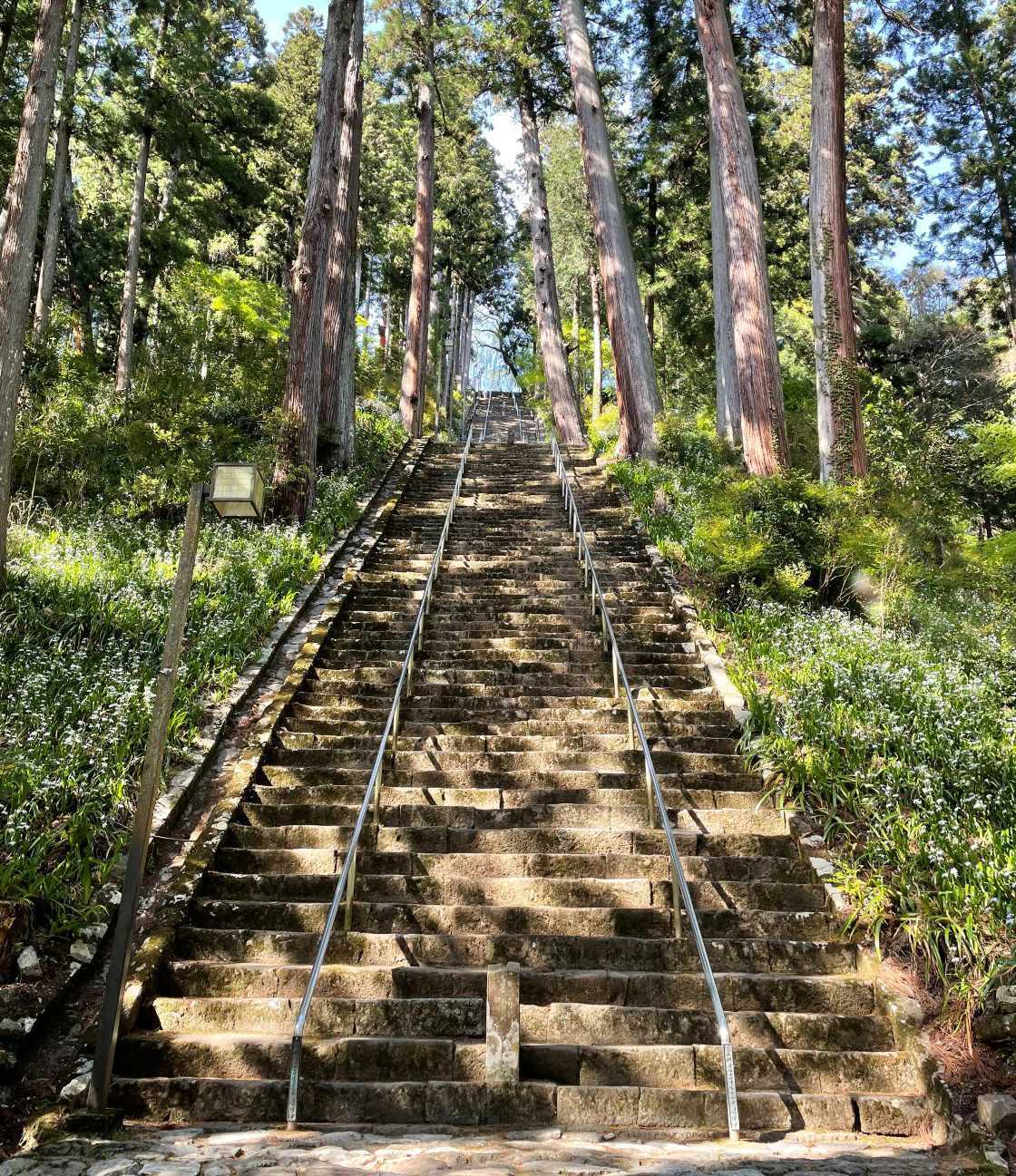
While you might start to feel tired along the way, the breathtaking views from the elevation make it all worthwhile. The key is to climb at your own pace without rushing. Take slow steps and don't forget to breathe deeply. The fresh air will blow all your fatigue away. Climbing with me was a spirited elderly Japanese person. Of course, our common goal was to reach Kuonji Temple.
As I climbed the steps, a beautiful five-storied pagoda appeared before me. The area around Kuonji Temple is vast, with many ancient buildings.
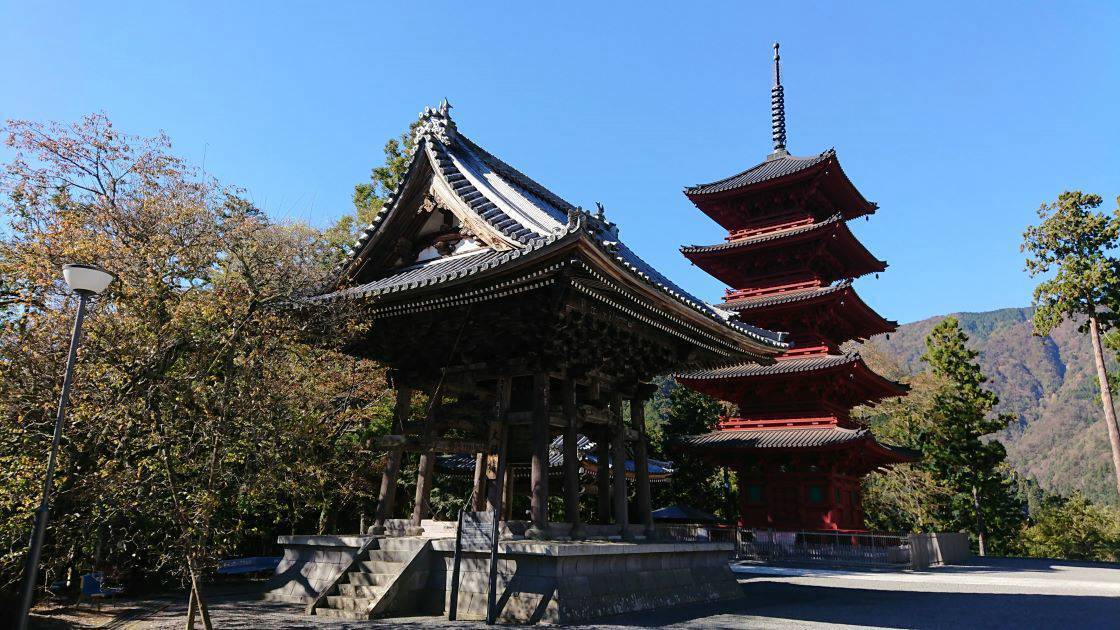
The first place I visited was the main hall, and a very impressive one at that. Dominating the ceiling of the hall is the Bokuryu dragon, casting its gaze upon all below. Here, not only devotees, but also general visitors are welcome to enter and pray. The following morning, I too plan to join in the monks' prayers.
For those fascinated by Japanese culture and history, the Mt. Minobu Museum is a must-visit destination. Located underneath the main hall, this museum houses cultural treasures that were once kept in a treasure house. With a collection of around 5,000 artifacts, each piece was meticulously catalogued in 1973 by the Minobu Gallery and Library. The museum boasts an extensive collection of significant paintings, scriptures, and historical artifacts, attracting about 60,000 visitors each year.
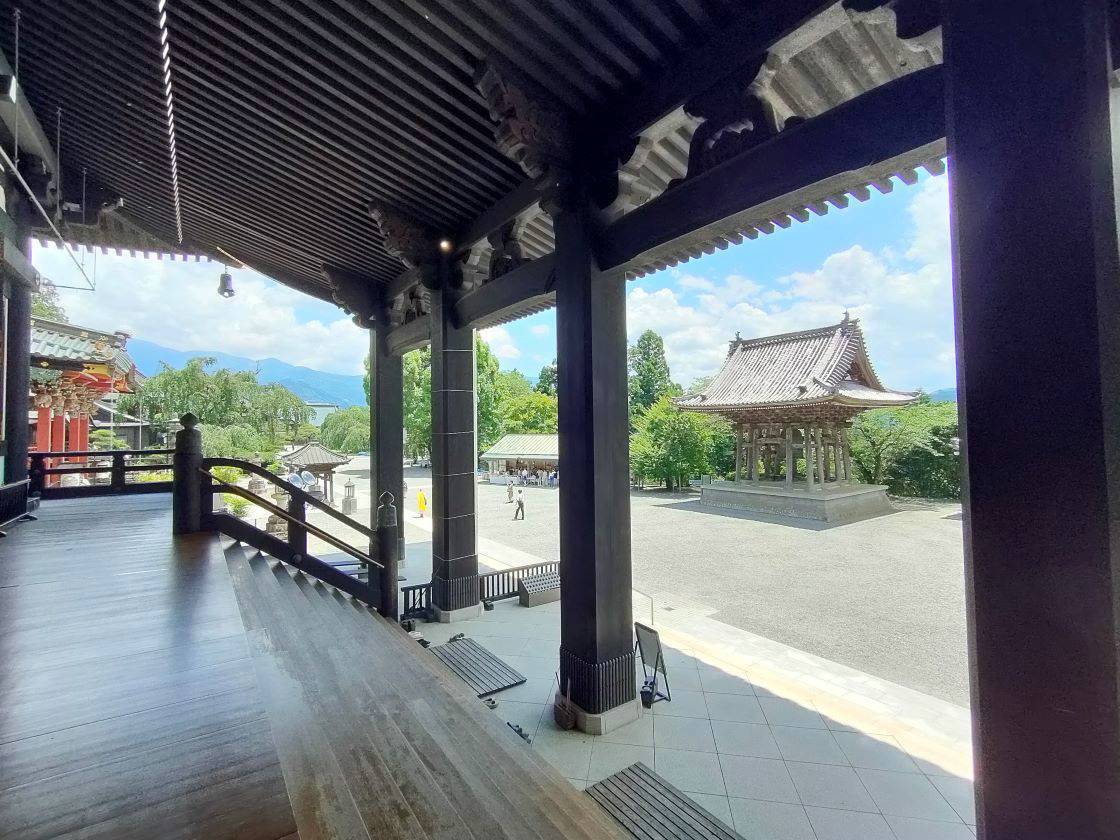
Visitors can try their hand at traditional Japanese calligraphy, tracing the brushstrokes of sutras revered by the Nichiren sect. It's not particularly difficult, and no special explanation is needed. Even though it involves simply following the thin ink lines with a brush to write kanji, this activity can be enjoyed even by those who are new to the Japanese language.
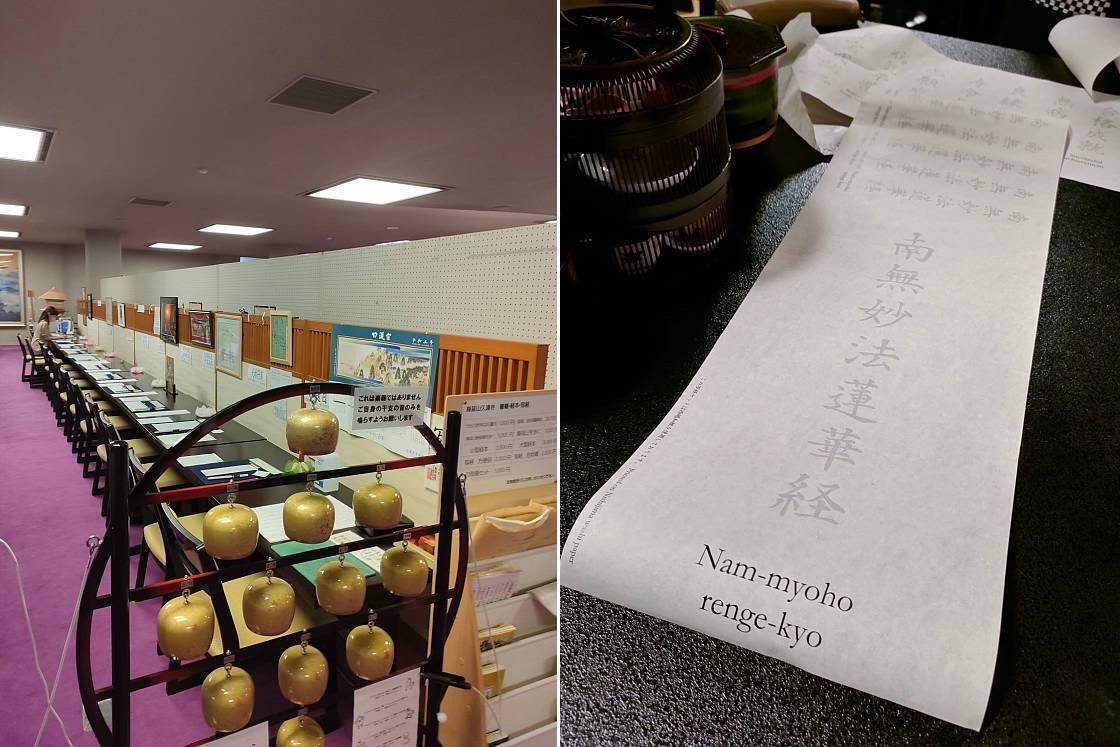
In the evening, I headed to a shukubo for the night. A shukubo refers to lodging facilities located within temples or shrines. Originally, these served as accommodation for monks or pilgrims, but now they also welcome general tourists. Mt. Minobu is home to several of these facilities that accommodate tourists and foreigners. They are popular among international tourists because they offer a chance to enjoy historic architecture, beautiful gardens, and the unique experience of traditional vegetarian cuisine known as shojin-ryori.
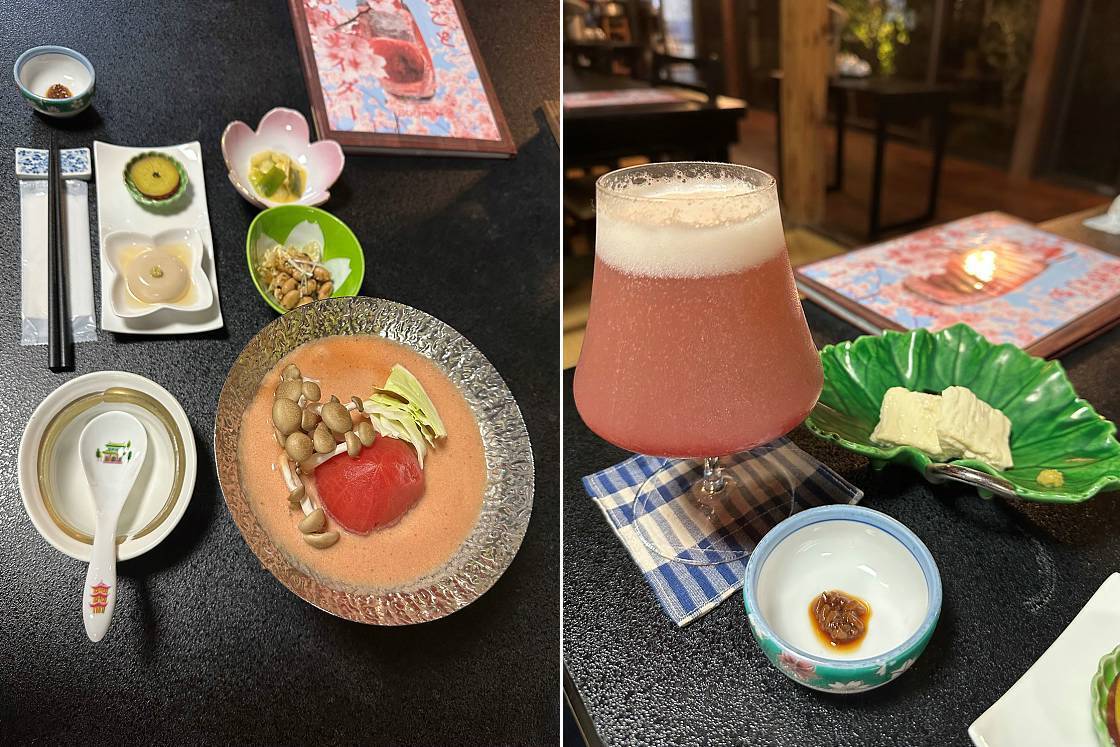
Shojin-ryori is a type of cuisine prepared without using meat or fish, relying solely on plant-based ingredients, such as vegetables and tofu. At first, it might be hard to imagine what it tastes like, but it looks very appealing and delicious when served. I had tried tomato soup before and liked it, but then I tried a tomato hot pot made with yuba (tofu skin) and soy milk, and it was even more delicious. This hot pot was easy to eat, had a refreshing taste, and felt like a new experience. Eating shojin-ryori is not only delightful but also seems to cleanse the soul. It's beneficial for the body and refreshing for the spirit, making it a special experience. If you have the chance, I recommend trying shojin-ryori. It's beautiful to look at, delicious to eat, and good for the soul.
On day2 I visited the main hall of Kuonji Temple at five in the morning and participated in the morning prayers along with the monks and devotees.Every morning, before their duties begin, about 60 monks gather and march in procession into the main hall of Kuonji Temple. It is an overwhelming sight to behold. The start of their service is signaled by the loud ringing of a large bell, which resonates deeply all around. This sound serves as a signal for the beginning of prayers and to mark the time. The large bell, found in most temples and shrines in Japan, functions as a symbol for conveying important Buddhist teachings. The sound of the bell echoes far, calming the hearts of those who hear it, and its beauty leaves a profound impression as both a cultural and religious symbol.
Those who arrive early can hear the sound of the large bell. The dynamic action of the monks using their whole bodies to pull the giant wooden bell hammer is captivating. This incredible technique of maintaining balance on the edge of the bell tower, keeping their bodies parallel to the ground, is a grand spectacle worth seeing.
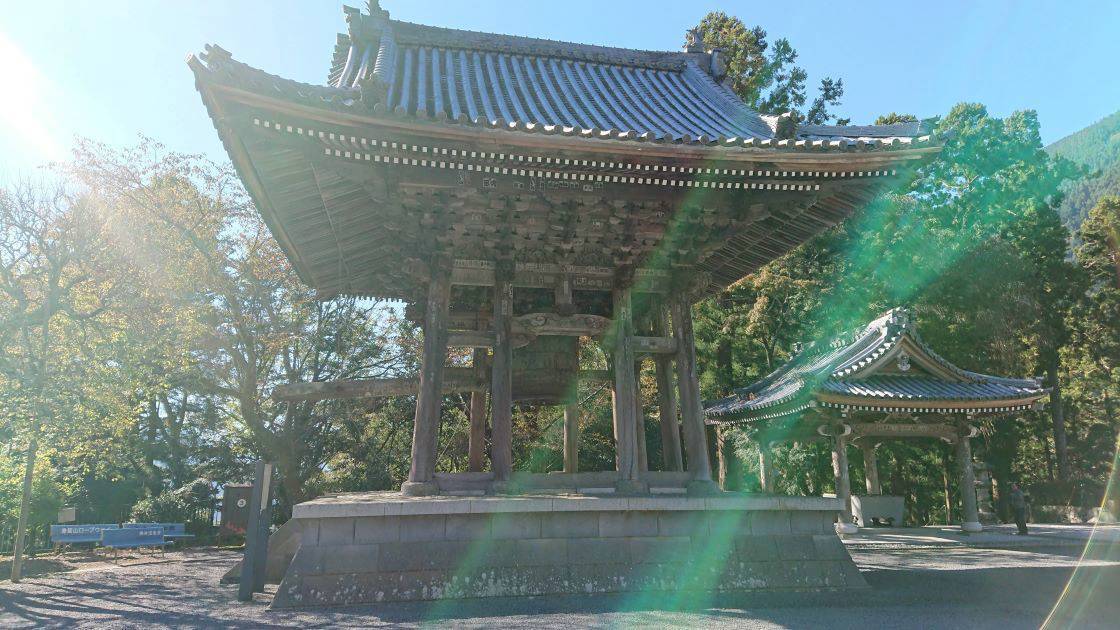
Afterward, a large number of monks recite sutras. The atmosphere is very spiritual and awe-inspiring:
The devotion service carries a solemn atmosphere, yet it's open to non-devotees, tourists, and foreigners as well. The sound of the large drum and the monks chanting together during the service is incredibly powerful, to the extent that it can startle the body. Through this experience, the beauty of spirituality can be deeply felt as a very special encounter, engaging all five senses. During the service, there is also the practice of offering incense. Offering incense is an act of reverence towards the Buddha.
The procedure for offering incense typically follows these steps:
- Approach the incense burner: Use your right hand's thumb, index finger, and middle finger to pick up a pinch of the powdered incense next to the incense burner.
- Drop the incense: Gently drop the pinched incense into the center of the incense burner.
- Bow twice: Face forward and perform two bows as a sign of respect.
- Clap twice: Similar to a clapping motion, clap your hands twice as part of the prayer ritual.
- Bow again: Face forward again and perform one more bow.
- Step back and return to your seat: Take a few steps back and return to your seat without turning your back to the incense burner.
This sequence is a respectful way to participate in the offering of incense during a worship service or ceremony, reflecting reverence and devotion.
As the morning devotion service came to a close, everyone lined up to receive "Gokyouha" from the monks, which are leaf-shaped papers with sutra inscriptions on them, presumably as a token of gratitude for visiting Kuonji Temple. Although I started off feeling quite anxious, by the end of the service, I was profoundly moved.
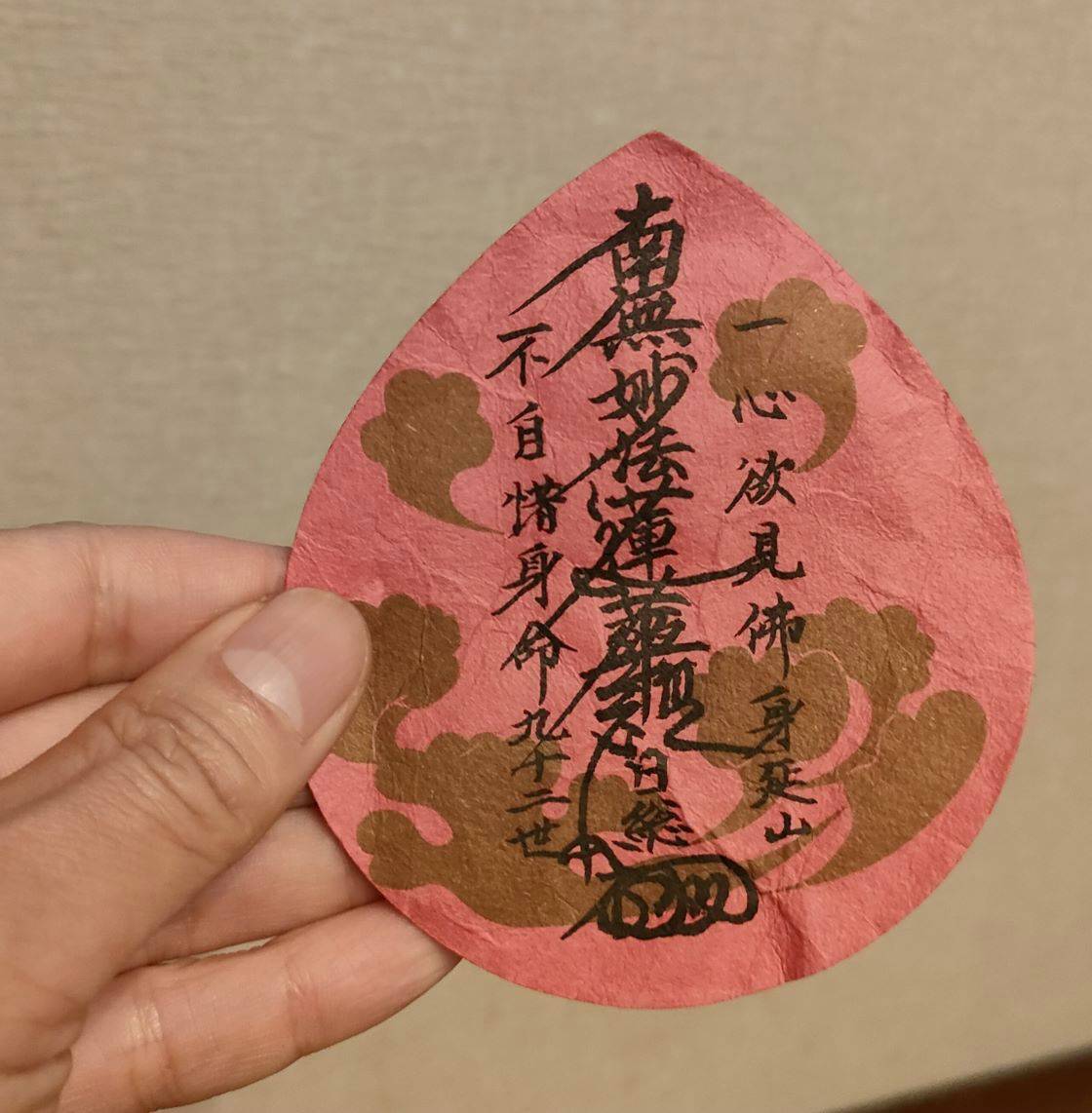
The morning devotion service times are as follows:
- From April to September, the service begins at 5:30 AM.
- From October to March, the service starts at 6:00 AM.
After participating in the morning service, I returned to the temple lodgings where a breakfast of shojin-ryori was served.
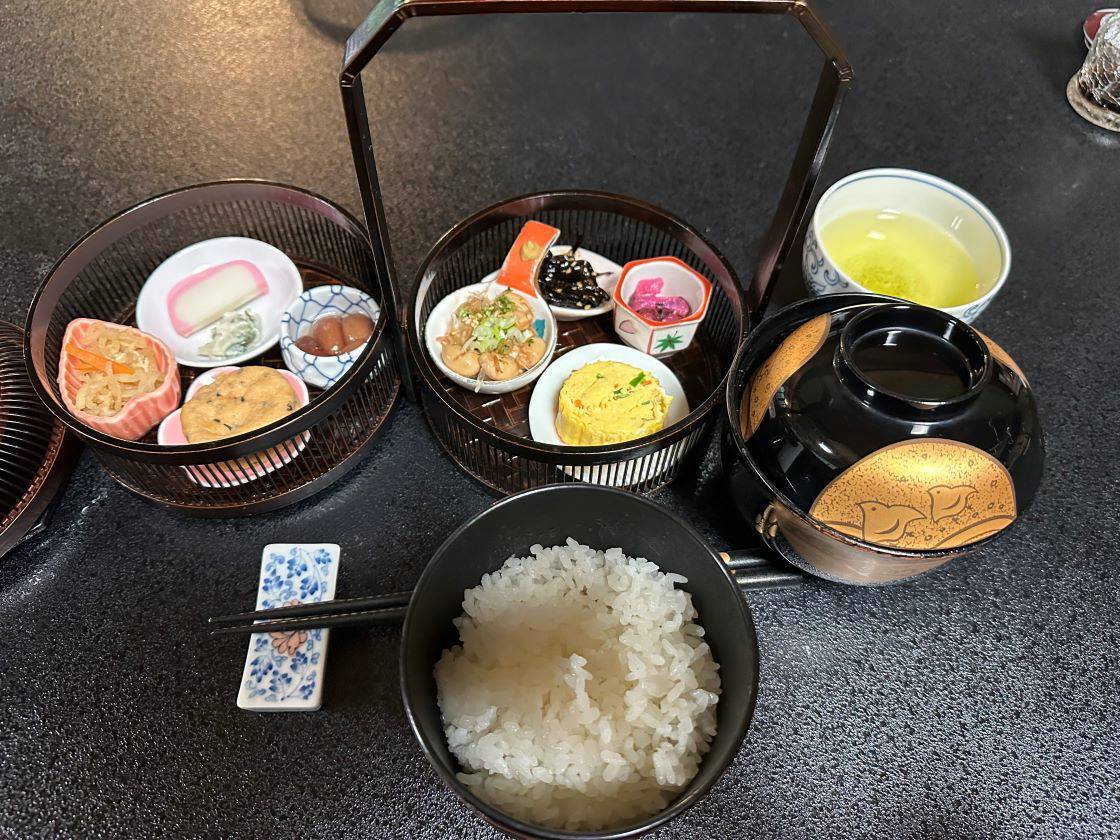
After checking out, I stored my luggage in a locker. I wanted to explore the area around Mt. Minobu a bit more and enjoy the mountain scenery, so I went up to the summit and the inner shrine via the ropeway. The ropeway to the summit of Mt. Minobu takes you up to an elevation of 1,153 meters and the journey to the top lasts about seven minutes. You enjoy grand panoramic views from the window during the ride up.
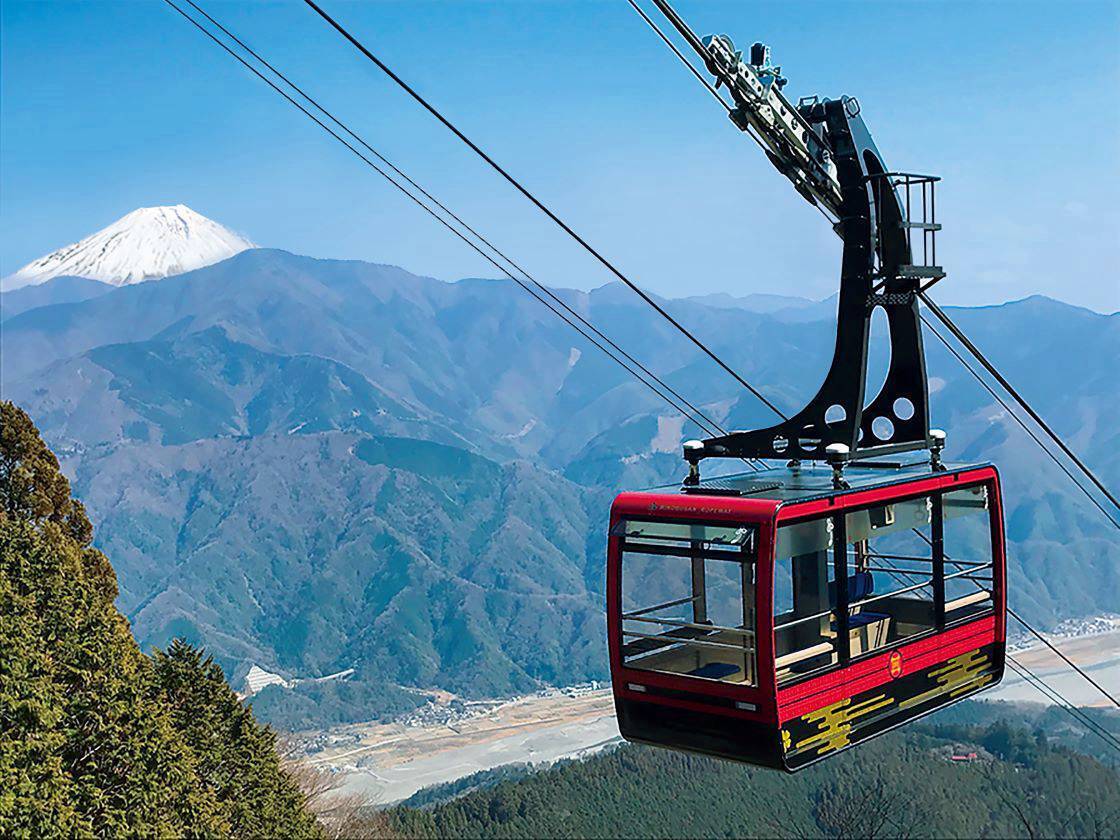
From the observation deck at the summit, Mt. Fuji can be clearly seen to the east if the weather is clear. Locals say that from March to September, in the early morning, you can witness the sun rising from the top of Mt. Fuji, creating a beautiful scene known as the Diamond Fuji.
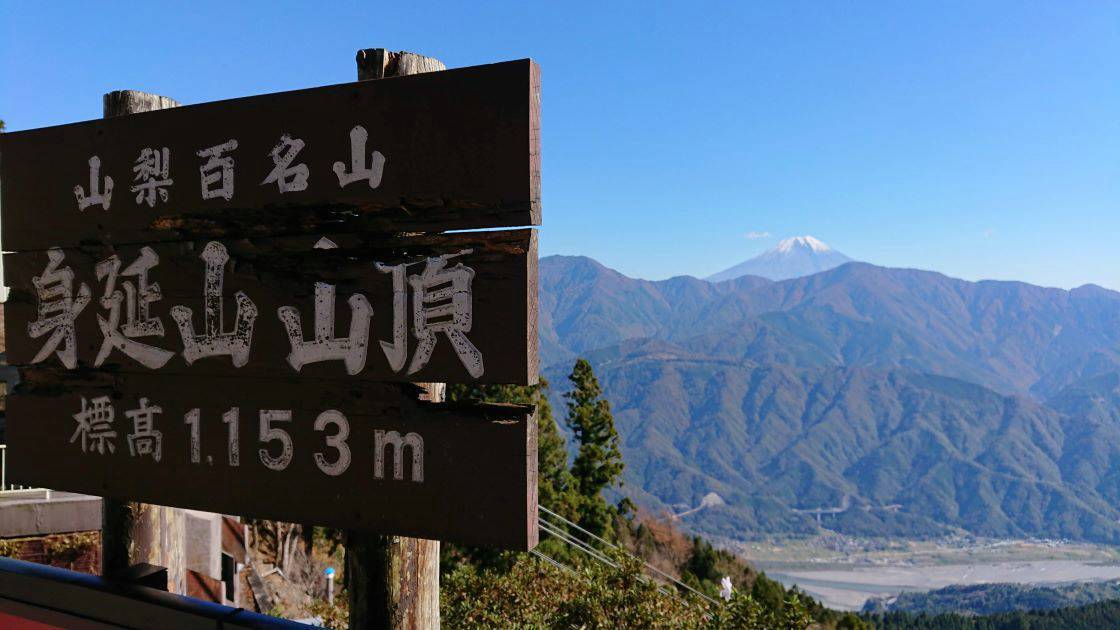
At the summit, there are plenty of beautiful nature trails to enjoy. This place is recommended not only for those who enjoy visiting sacred places but also for those interested in trekking.
Lastly, I took a walk to the inner shrine, the shishinkaku. This is a sacred site visited by many worshippers daily, where you can spend time in quiet reflection.
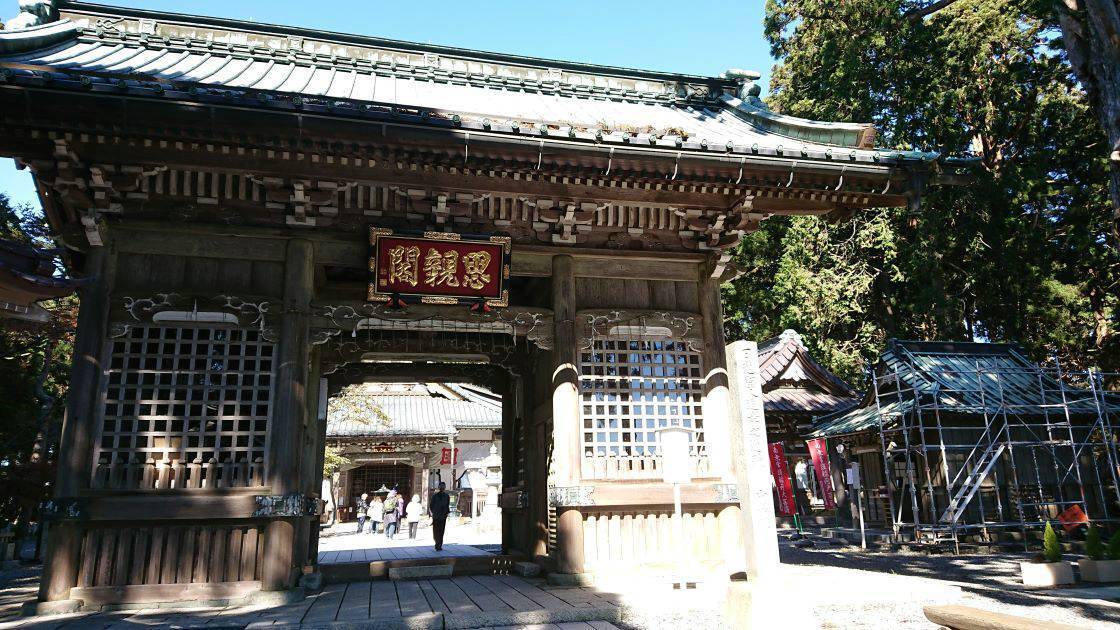
This place seems like a hidden gem. When I visited, I met many Japanese people, but there were only a few foreigners. It seems that many foreigners are not very aware of this location. It's definitely a place worth visiting!
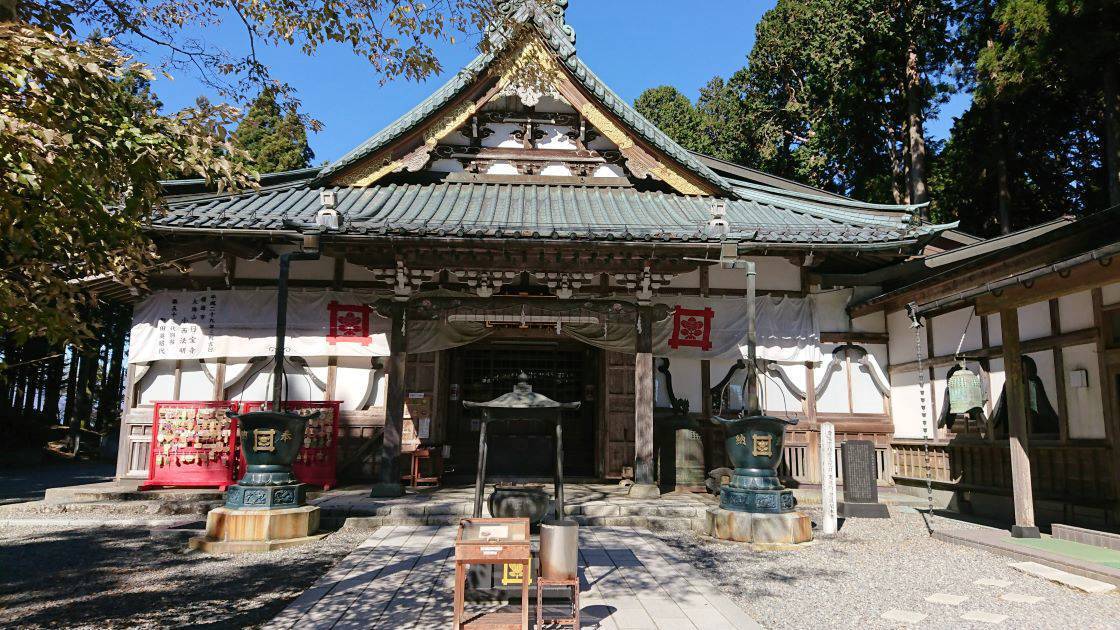
Visiting Mt. Minobu and Kuonji Temple is a very special and calming experience. It's easily accessible from Tokyo, and you can not only enjoy the rich natural scenery but also encounter a temple that touches upon Japan's long history. By wandering around the temple grounds and participating in the services, you can find peace of mind, making it an unforgettable memory.
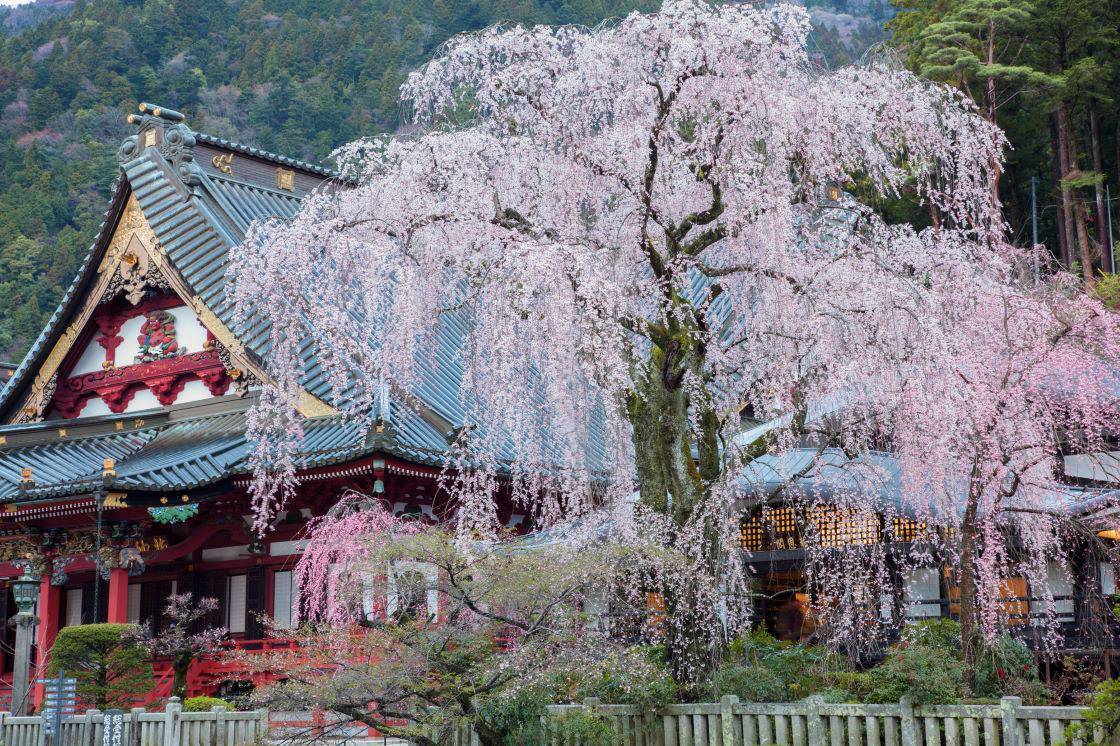
It was finally time to leave Mt. Minobu. For those returning to Tokyo, it's convenient to know that there is a direct bus from Mt. Minobu to Shinjuku, making your return journey a hassle-free one:
https://highway-buses.jp/course/minobu.php
From Mt. Minobu, you can also travel on to other areas such as Shizuoka, so it is worthwhile considering Mt. Minobu as a stopover point on your way to visiting other places like Kyoto or Osaka.
